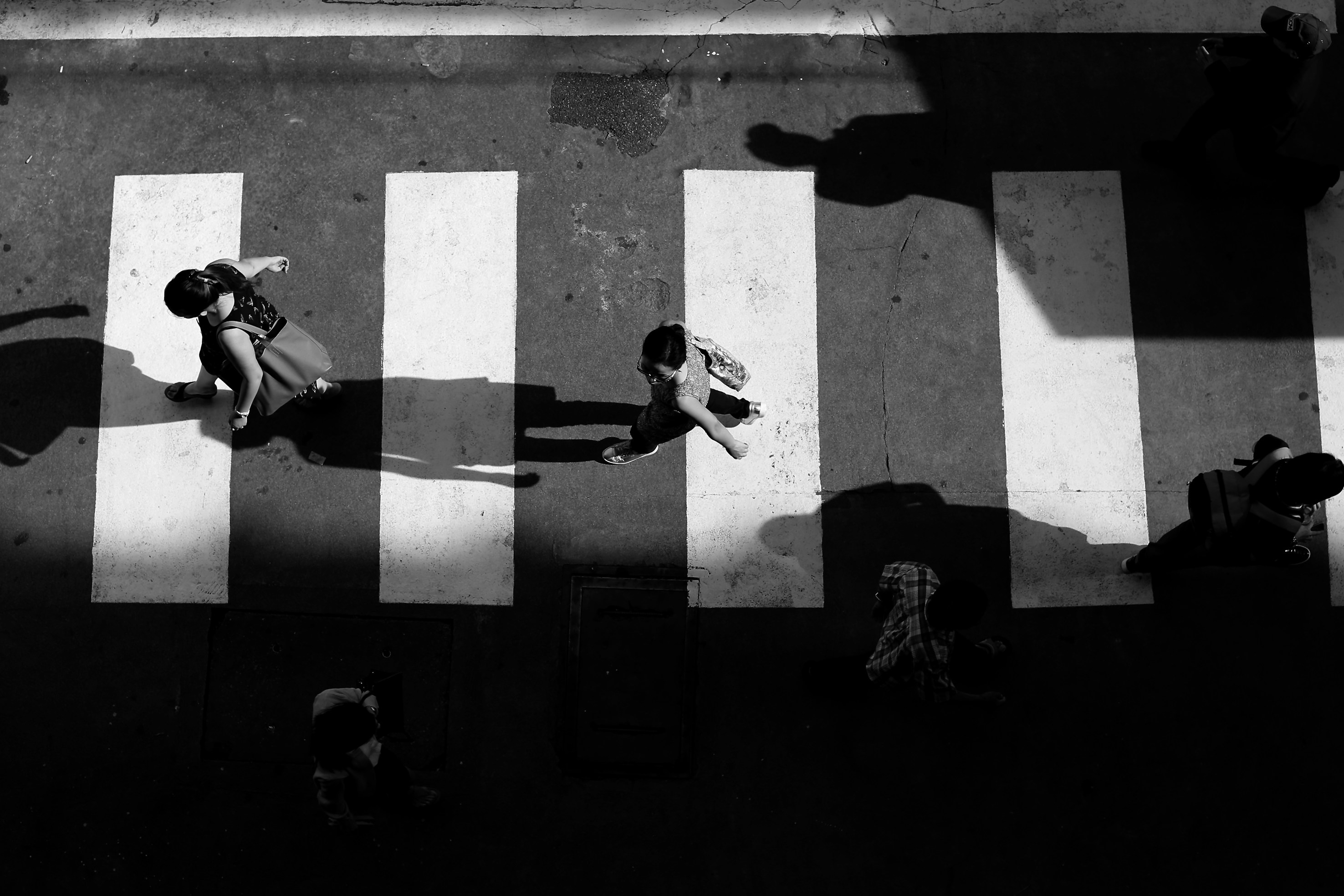Have you ever struggled to see around parked cars when crossing the street? This common challenge is addressed by the 'Daylighting' Law, designed to improve safety at intersections. As urban areas face congestion, effective legislation becomes critical for protecting pedestrians and drivers alike.
The 'Daylighting' Law focuses on clearing visibility near crosswalks by altering parking regulations. With the passing of Assembly Bill 413, specific changes have been introduced to make our streets safer. These changes impact various cities, targeting locations where crosswalk visibility is paramount.
Stay with us as we explore the intricacies of the 'Daylighting' Law, why it's pivotal for pedestrian safety, and how it could significantly reduce accidents. From understanding its purpose to practical ways to adjust, this article breaks down everything you need to know.
The Purpose of the 'Daylighting' Law
The Daylighting Law is designed to boost pedestrian safety by improving visibility at intersections, which is vital because over 25% of pedestrian fatalities in the U.S. occur there. This law restricts parking within 20 feet of a crosswalk. It clears the visual field so both pedestrians and drivers can see each other. This reduces the risk of collisions significantly.
Key Features of the Daylighting Law:
- Parking Restrictions: Prohibits parking within 20 feet of a crosswalk.
- Enhanced Visibility: Improves drivers' and pedestrians' ability to see each other.
- Curb Extensions: Further restricts parking within 15 feet of a crosswalk.
These measures aim to make streets safer not just for pedestrians but also for cyclists and drivers. By ensuring open sightlines around crosswalks, the law reduces traffic-related fatalities and enhances overall safety for everyone on the road. If you face any issues or an accident due to these regulations, Infinity Law Group can assist.
Key Changes Introduced by AB 413
California Assembly Bill 413 introduces crucial changes aimed at increasing pedestrian safety by regulating vehicle parking near crosswalks. Under this law, effective January 1, 2025, stopping, standing, or parking a vehicle within 20 feet of the vehicle approach side of any crosswalk is prohibited. This rule applies to both marked and unmarked crosswalks. Additionally, if a crosswalk features a curb extension, the parking restriction extends to 15 feet. This legislation is part of the California Vehicle Code, specifically Section 22500(n), signed into law by Governor Newsom in October 2023. As cities like Fremont update their municipal codes to comply, this law represents a statewide commitment to reducing pedestrian risks at intersections.
Definition of 'Daylighting'
Daylighting is a critical safety measure designed to enhance visibility at crosswalks. By keeping parked vehicles away from the immediate vicinity of a crosswalk, daylighting ensures drivers and pedestrians can see each other more clearly. This measure reduces potential traffic conflicts, as pedestrians can better see and be seen by oncoming vehicles before entering the road. The daylighting law mandates a minimum distance of 20 feet from the crosswalk or 15 feet where curb extensions exist. Removing visual barriers through daylighting significantly decreases the risk of pedestrian injuries, making urban streets safer for all users.
Impact on Parking Regulations
Starting January 1, 2025, California’s daylighting law, stemming from AB 413, changes existing parking regulations by prohibiting vehicle parking within 20 feet of the approach side of all crosswalks. For intersections with curb extensions, the no-parking distance is reduced to 15 feet. This adjustment considers specific crosswalk designs while prioritizing safety. Aligning with over 40 states with similar laws, California aims to improve intersection safety by enhancing visibility for drivers, cyclists, and pedestrians alike. Initially, a $64 fine will penalize violations, but the focus will initially be on raising driver awareness and education.
Affected Areas: Key Cities Implementing the Law
Several key cities in California are set to enforce the daylighting law to enhance pedestrian safety. In San Diego, over 16,000 intersections will observe the new rules starting January 1, 2025. The city of Fremont actively implements intersection daylighting in school zones as part of the Vision Zero initiative, striving for no traffic-related fatalities. Meanwhile, Santa Rosa is engaging its community to apply daylighting measures effectively, enhancing safety at their crosswalks. Anaheim has adopted the law to improve safety for pedestrians, cyclists, and drivers alike, ensuring clear visibility near intersections. This statewide application, similar to regulations in over 40 other states, underscores a commitment to safer roads across California.
Reasons Behind the Law
The ‘Daylighting’ Law is a vital measure introduced to enhance safety at intersections. With more than a quarter of pedestrian fatalities occurring at intersections in the United States, this law aims to reduce such incidents by improving visibility. By removing parked vehicles near crosswalks, both the pedestrian and driver have an unobstructed view, reducing the risk of severe injury and fatalities. The law mandates no parking within 20 feet of a crosswalk, and within 15 feet where curb extensions exist. This regulation helps ensure a clear line of sight for drivers and pedestrians, promoting safer streets. California’s Daylighting Law aligns with similar laws in over 40 states, ensuring consistency in parking regulations. By prioritizing safety and visibility, California takes a significant step towards reducing traffic-related fatalities at intersections.
Enhancing Pedestrian Safety
Assembly Bill 413, known as the Daylighting Law, primarily focuses on enhancing pedestrian safety. This law prohibits vehicles from parking within 20 feet of crosswalks, which increases the visibility of pedestrians to drivers. The free space created near crosswalks ensures pedestrians, cyclists, and drivers can easily see one another. As a result, risks of collisions decrease significantly. The impact of daylighting is especially beneficial for children, who can now have a clear view of traffic before stepping onto the street. By eliminating visual obstructions, drivers can notice pedestrians well in advance. This initiative not only promotes pedestrian safety but also aligns with the Safe Routes to School (SRTS) goals, making walking and biking more attractive and secure options for families.
Improving Driver Visibility
The Intersection Daylighting Law significantly improves driver visibility, especially at critical points where accidents frequently occur. By prohibiting parking within 20 feet of crosswalks, the law ensures that drivers have a better line of sight. Vehicles parked close to crosswalks can obscure a pedestrian's presence, which raises the potential for accidents. When these obstructions are removed, drivers have the opportunity to spot pedestrians sooner. This early detection can reduce the likelihood of accidents. Scheduled to be effective from January 2025, California's daylighting regulation aims to offer uniform safety standards observed in over 40 states. This law is a proactive step towards enhancing driver awareness and, subsequently, pedestrian safety by ensuring that crucial crossing points are more visible to all road users.
If you have experienced an accident due to visibility issues, consider reaching out to Infinity Law Group for expert guidance and assistance.
Implementation and Enforcement
The Daylighting Law, championed by California's Assembly Bill 413, marks a pivotal shift in managing road safety and urban planning. Effective January 1, 2024, this law restricts parking within 20 feet of any crosswalk approach. Although the prohibition starts in 2024, citation enforcement won't begin until January 1, 2025. This gives residents and authorities time to adjust. Known legally as California Vehicle Code Section 22500(n)(1)(A), AB 413 aims to enhance safety by reducing vehicle obstructions near crosswalks. It's set to impact over 16,000 intersections in San Diego alone, with similar laws already existing in more than 40 states.
Enforcement Grace Period
Starting January 1, 2024, the Daylighting Law will be in effect across California. However, it's important to note that while the law will take hold immediately, there is a one-year grace period before any fines or citations will be issued for violations. This grace period ends on January 1, 2025. During this time, local communities are encouraged to adapt to the changes. This period serves as a crucial adaptation phase, allowing motorists and urban planners to familiarize themselves with the new parking regulations. Throughout this time, educational campaigns will highlight the significance of this law in improving pedestrian visibility and road safety.
Role of Local Transportation Agencies
Local transportation agencies play a vital role in implementing the Daylighting Law efficiently. Their responsibilities include marking restricted zones near crosswalks, often using red curb markings or installing plastic posts to signal no-parking zones. These agencies are tasked with designing clear signage to help drivers comply with these new rules. Communication strategies will also be rolled out, highlighting the importance of pedestrian safety and reducing traffic-related fatalities. Cities are preparing to engage with citizens through workshops, informational materials, and public updates. By adopting these measures, transportation agencies aim to facilitate smooth adherence to AB 413, ensuring safer crossings for all pedestrians.
SFMTA's Historical Initiatives
The San Francisco Municipal Transportation Agency (SFMTA) has been a trailblazer in road safety practices long before the statewide enforcement of the Daylighting Law. With initiatives aligned with the Vision Zero, SFMTA has historically focused on reducing pedestrian fatalities and improving street-level visibility. Their efforts include implementing curb extensions and daylighting measures at intersections to maximize the pedestrian's visual field. By doing so, SFMTA has significantly contributed to lowering traffic-related deaths. SFMTA's methods serve as a model for other regions adapting to the new law, exemplifying how proactive infrastructure changes and public education can lead to a safer urban environment.
Benefits of Daylighting
Daylighting, a crucial aspect of road safety, significantly contributes to reducing pedestrian accidents. The concept involves enhancing pedestrian visibility by regulating parking near crosswalks. By clearing obstacles such as parked cars, daylighting creates a clear line of sight for both pedestrians and drivers at intersections. In many areas, especially where unmarked crosswalks exist, this safety measure proves vital. Daylighting is often achieved through methods like curb extensions, also known as bulb-outs, or painting red curb markings. These practices help to deter vehicles from parking too close to intersections, ensuring that visual fields remain unobstructed.
Reduced Accidents and Collisions
Daylighting plays a pivotal role in minimizing accidents and collisions at intersections. By preventing vehicles from obstructing the line of sight, pedestrians are more visible to drivers. In California, the implementation of Assembly Bill 413 (AB 413) enforces parking prohibitions close to crosswalks, which can be either marked or unmarked. The goal is to increase safety by decreasing potential blind spots created by parked vehicles. Vision Zero initiatives across the state aim to eliminate traffic-related fatalities, with daylighting being a key component in this strategy. The clear demarcation near crosswalks ensures that both pedestrians and drivers have ample time to react, substantially reducing the likelihood of collisions.
Increased Awareness Among Drivers and Pedestrians
Daylighting not only improves safety but also raises awareness among drivers and pedestrians regarding their surroundings. When using daylighting strategies such as red curb markings or erecting plastic posts, the pathways become more visible. This makes pedestrians more cautious, encouraging them to cross at designated areas. Drivers, on the other hand, are alerted to the presence of crossing pedestrians through clear visual cues. This heightened awareness facilitates better navigation through intersections, significantly contributing to overall pedestrian safety. Increased visibility and awareness foster a culture of attentiveness and respect on the road, which is essential for reducing parking violations and ensuring compliance with parking restrictions near crosswalks.
How Residents Can Adapt to the New Regulations
As cities aim to improve pedestrian safety, new regulations such as the 'daylighting' law are being implemented. These laws change how parking is structured, especially near crosswalks. Adjusting to these changes is essential for residents and drivers. Addressing vehicle obstructions to ensure pedestrian visibility at crosswalks is a priority. Understanding these new rules, using available resources, and educating the community can ease this transition.
Understanding Local Guidelines
The 'daylighting' law, often linked with Vision Zero initiatives, targets traffic-related fatalities by prohibiting parking close to crosswalks. This law applies to both marked and unmarked crosswalks. In California, Assembly Bill 413 aims to increase pedestrian safety by keeping vehicles away from crosswalks, enhancing the visual field for both pedestrians and drivers.
- The California Vehicle Code outlines curb markings like red zones, indicating no stopping or parking areas.
- Vehicles should maintain a clear distance from intersections to prevent accidents.
- Compliance can lead to reduced parking violations and improved overall safety.
Understanding these guidelines prevents misunderstandings and enhances community safety. Consult local traffic manuals to stay updated.
Tools and Resources for Compliance
Adapting to these new requirements doesn't have to be challenging. Several tools and resources are available to help residents comply. Local governments often provide maps highlighting designated parking spaces and zones where parking is restricted. Online resources and community workshops educate the public on new rules and proper parking techniques.
- Websites like your city’s transportation department offer updates on parking restrictions and regulations.
- Mobile applications provide real-time information about parking violations and restrictions.
- Workshops and seminars serve as educational platforms for residents to learn about parking laws and achieve compliance.
Utilizing these resources can make adapting to daylighting laws smoother and help avoid unnecessary fines.
Role of Community Education
Community education plays a crucial role in implementing new traffic laws. Increasing awareness ensures that drivers understand the importance of pedestrian visibility and safety at crosswalks. Educational programs and campaigns can inform and engage residents effectively.
Initiatives can include:
- School programs that teach children about pedestrian safety and the significance of marked and unmarked crosswalks.
- Neighborhood meetings where local authorities discuss parking prohibition measures and answer questions.
- Social media campaigns to reach a broader audience with information about daylighting laws and parking restrictions.
When the community is well-informed, compliance with new regulations increases, reducing traffic-related fatalities and enhancing pedestrian safety. Engaging residents through education fosters a safer environment for everyone. Visit Infinity Law Group if involved in an accident that may be linked to these changes, and they can provide legal assistance to navigate such incidents.





